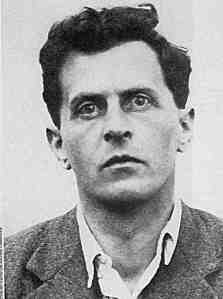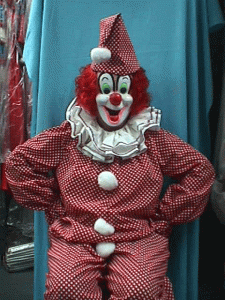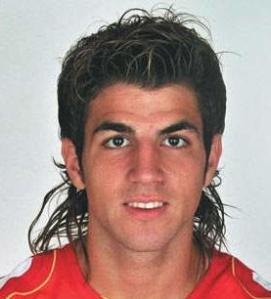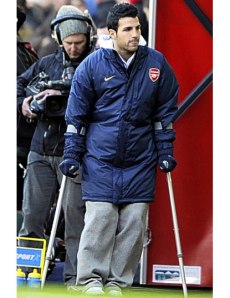Herman Hesse, The Glass Bead Game
There are certain books that you begin in the full certainty that, barring some hugely improbable contradiction of everything you have been led to believe by blurbs, friends, general knowledge, critics, and years of previous reading, you are probably in for something special. A few recent examples of books whose awesomeness I took in advance to be a given (and which didn’t let me down in this expectation): Roberto Bolano’s 2666, W.G Sebald’s Austerlitz, Milan Kundera’s Immortality. I won’t lie – The Glass Bead Game by Herman Hesse was not one of these books.
I’ve always viewed the unfortunately-named Hesse as an acceptable gap – one of those major authors, like, say, Gertrude Stein or Norman Mailer, whom you can get away with leaving pretty well alone. Allegorical and/or historically removed explorations of man’s journey into The Self in search of spiritual enlightenment, strongly influenced by Eastern mysticism and Jungian psychoanalysis, and written by a hermetic German in self-imposed exile in Switzerland? Nah, I’ll probably be alright cheers mate.
The Glass Bead Game is, to use the accepted parlance, Hesse’s ‘magnum opus’ (ie his longest book). He wrote it between 1931 and 1943, when it was published in Switzerland (it was banned in Germany by the Nazis – but then, you don’t really want your ‘magnum opus’ to not be banned by the Nazis, do you?). Like Camus’ The Plague, it allegorizes some of the moral and existential dilemmas thrown up by totalitarianism and war and God being dead and stuff, and explores them as general, universal philosophical issues by removing them from their immediate historical context (though this context is always a thinly veiled presence in the background).
The narrative takes place at an unspecified point in the future (alarm bells), in a society of whose circumstances, values and character we get few clues, but which Hesse said he conceived of as being around the 25th century AD. (I’m sure this was a crucial part of the conception of the novel – I mean, imagine how different it would’ve had to be were it set in the 24th century or, like, the 26th century).
So, most of the story is told from the perspective of a historian, recounting the life of the significant 23rd century personage Joseph Knecht (the protagonist). This section lasts a good 350-odd pages, and is followed by the ‘Legend’ of Knecht’s life (starting from the end of the bit covered in the history) as apparently narrated by his contemporaries. Then at the end, having been given an account of Knecht’s life up to and including his abrupt death, as in Boris Pasternak’s Doctor Zhivago we read a series of documents (poems and short stories written by Knecht) which cast a hitherto unseen perspective (his) on that story, and cause us, to an extent, to reassess what we have read.
So on one hand, it’s told as a bildungsroman with the slightly annoying charade of the imaginary historian (documents ‘edited by Herman Hesse’) – but on the other there is some reasonably elaborate multiple narrative framing going on in the second part of the novel.
The story is set in Castalia, a remote province designated by society as the ultimate intellectual ‘Ivory Tower’ – isolated from worldly concerns, and populated by monkish thinkers whose only purpose is to ponder intellectual, aesthetic and theoretical problems at their most pure, Platonic level: logical, abstract, non-applied, non-referential, unsullied by any consideration of their contextual relevance or application to the vulgar mutability and imperfection of the actual world.
The inhabitants of Castalia have devised the ultimate way of distancing the intellectual from the worldly and thus addressing ideas at their most abstract level – the ‘glass bead game’. This is an interesting concept that is never really explained in any detail, perhaps because its importance within the book is mostly symbolic – as a generally representative logical conclusion of Ivory Tower hermeticism, rather than something whose specifics have any real bearing on the narrative.
Vaguely what happens is, the game is played on some sort of huge abacus-like contraption, on which players make patterns using coloured glass beads. Based on music, one player starts with a theme (a shape or pattern) and other players respond with patterns of their own, all the time making the interconnections between themes and ideas more complicated and oblique – and also beautiful, because in a sense the glass bead game is a symbol of the aesthetic beauty of pure, non-referential, abstract thought at its most complex and rarefied. The patterns in the glass bead game are intricately interconnected but their reference is closed, private and internalised. Its only meaning is that which it creates within itself, and in reference to its own internal precedents.
So you can kind of see where Hesse is going with this. On the one hand you’ve got a Platonic binary separating ideas and things, with the Castallians elevating the former above the latter and recognising no necessary interdependence between the two. And on a more contemporary note, Hesse is gunning for one of the big themes in 20th century art, theory and philosophy – the relationship between symbols and symbolic structures (from signs, words and images to whole languages, pieces of art, literature, music etc) and the real world.
A few contextual examples: Wittgenstein wrestled with whether linguistic meanings boil down to anything more than word games serving to reinforce the internal structures of meaning contained within languages. Viktor Shklovsky conceived of artistic expression as a demonstration of technique whose real-world reference points were largely unimportant. Walter Pater thought art was a way of breaking down the barriers of form and content, naturally aspiring toward ‘the condition of music’, wherein the two are largely indistinguishable. Nabokov conceived of novels as self-contained ‘riddles with elegant solutions’, in which general ideas had no place.
Modernist music increasingly eschewed emotional content in favour of formal content, culminating in the ‘tone poems’ of Grieg etc, which are almost mathematical exercises. In Camus’ The Plague, the character Grande spends his time tinkering with the first sentence of his novel to make it so perfect that the only possible reaction of a reader will be to say ‘hats off, gentlemen’ (meanwhile the people of the town are dying). Formalism and New Criticism approached texts as purely aesthetic objects whose external reference was a secondary consideration to their formal design. The narrator of Joseph Conrad’s Under Western Eyes declares that ‘words… are the great enemies of reality’. The theorist Rene Welleck referred to this category confusion between words and things as an unbridgeable ‘ontological gap’.
Modernism in general had introspective and sceptical tendencies that separated it from realism and placed it closer to the subjectivist world-view of the romantics. On one level, then, Hesse’s idea of the glass bead game is an allegory of the artistic and philosophical introspection characteristic of the first half of the twentieth century – and which, ironically, coincided with the catastrophic historical events in which the ‘real’ (which the hyper-rational Castalians treat with scepticism as an epistemologically inaccessible domain and a secondary consideration to the pure intellectual realm of ideas) flexed its muscle: like war, the holocaust and totalitarianism.
So on the one hand in the novel (and the historical situation it allegorises) you’ve got idealism (the pursuit of artistic and intellectual purity above the everyday utilitarian dross of mundane existence) alongside scepticism (which questions the knowability of the real world, and its compatibility with the signs and forms we use to represent it). A good thing up to a point, surely? Is it not in mankind’s collective interest to further theoretical understanding, to safeguard an elite whose only responsibility is to the incredibly complex abstract and aesthetic issues it serves to examine? In the novel this functions as a post-religious church, wherein the object of worship is the beauty of abstract thought at its most refined and abstruse.
But on the other hand, you’ve got the age-old whistle-blowing, parade-pissing consideration of ethical responsibility. On a pragmatic level, someone’s got to foot the bill for your fancy Ivory Tower, and the pursuit of knowledge and understanding by an intellectual elite paid for by the enslaved tax-paying masses becomes a parasitic form of decadence if that knowledge is subsequently hoarded by the elite for its own sake and not used to benefit the general populus. As Plinio Designori (the novel’s rent-a-social-conscience cipher) rants:
For generations you have left to others dangerous, daring and responsible things like economics, law and politics. Cowardly and well-preserved, fed by others, and having few burdensome duties, you lead your drones’ lives, and so that they won’t be too boring you busy yourselves with all these erudite specialities, count syllables and letters, make music, and play the Glass Bead Game, while outside in the filth of the world poor harried people live real lives and do real work.
Whether to withdraw from the world in the pursuit of transcendent ideals or use the privileges society has bestowed upon you to make life easier for others. When you pose it as a moral dilemma, it becomes a bit of a no-brainer.
Hang on though, the story. Which, if I’m honest, is the main problem with the book. The ideas are great, but the plot often feels burdensome, formulaic, and ultimately an obstruction rather than a vital way of channelling the more important ideas the novel sets out to explore. Especially in the overlong first half of the book, the plot, outside of the interesting rhetorical trope of the glass bead game itself, seems to bring very little to the table. It made me think of this Dave Eggers quotation, used by David Shields in Reality Hunger:
I’ve always had a hard time writing fiction. It feels like driving a car in a clown suit. You’re going somewhere but you’re in costume, and you’re not really fooling anybody. You’re the guy in costume, and everybody’s supposed to forget that and go along with you
Now, I’m not trying to jump on Shields’ ‘make it real’ bandwaggon and I think plot is a far more complicated artistic tool than he gives it credit for (I also think several of his ideas are half-digested and outdated, but that’s for another time). But in the 350-page ‘history’ of Knecht’s life, the narrative charade (Hesse puts on the clown suit before the novel even begins with his rather silly ‘documents edited by Herman Hesse’ rider) seemed to me to achieve very little. The characters are transparently vehicles for ideas (that’s fine – it’s also often the case in authors whose work I love, like Coetzee or Kundera) but the plot seems to bog these ideas down rather than animate them, at least until the framing techniques come into play much later in the book. The prose and dialogue is also often plodding and lugubrious, in fitting with the sober austerity of the Castallian setting.
If The Glass Bead Game were a footballer, it would be Zlatan Ibrahimovic: looks great in a three-minute youtube highlights compilation, but in real time spends most of the game indolently loafing around achieving cack-all.
Actually, given that the story is a flimsy and largely extraneous coating for the novel’s ideas, let’s pretend it’s a book about football. The plot tells the story of Joseph Knecht (Cesc Fabregas), a prodigiously gifted player for his local youth team, who gets scouted by the Music Master (Arsene Wenger) to join the elite Castallian youth development squad at Waldzell, home of the Glass Bead Game. (An ineffectually and pointlessly virtuosic bunch of effete aesthetes who tip-tap it around and weave impossibly intricate patterns to no perceptible purpose, pouring Gallic scorn on the sweaty rabble who run around kicking people and hoofing the ball up the field in the hope of scoring goals, winning games and that sort of venal, uncouth loutishness).
A meteoric rise through the youth ranks ensues. during which the young Knecht is sent out on loan to a couple of other monasteries, where he gets a taste for using his Glass Bead Game skills to elevate and enlighten a couple of mid-table battlers, giving their long-suffering fans a glimpse of Waldzell-style joga bonito. Meanwhile, his socially conscious friend Designiori (Matthieu Flamini) comes through the ranks at the same time as Knecht, but is less favoured by the coaches, in part due to his fiery temperament, combative style and often incendiary opinions about the need to compromise Waldzell’s ‘total football’ aestheticism to achieve more outward-looking goals (manifested in a tendency to tackle people and shoot from outside the box).
Designiori defects just as his career looks to be taking off, drawn by the bright lights of the outside world and frustrated by the self-satisfied insularity of Waldzell – but he ultimately fails to adapt and spends a lot of time warming the bench on the sidelines of history. Knecht, meanwhile, continues his precocious career and becomes Waldzell’s talismanic and youngest-ever captain (Magister Ludi, or Master of the Glass Bead Game – a priest-like, iconic position as the accepted premier virtuoso with overall responsibility for ensuring the development of the game continues uninterrupted and free from the venal and pragmatic concerns of the real world.
And, after a tediously drawn-out and inevitable transfer saga, Knecht eventually follows Designiori out the door, vowing to embrace the real world and use his technique and learning to achieve real-world goals rather than limiting himself to onanistic virtuosity without an end product, like Paganini practising his scales. Abruptly and anticlimactically, however, he dies – attempting to engage in a faintly homoerotic swimming race with a young shepherd boy (Designiori’s son, to whom he has been entrusted as a mentor), he drowns in a stream in the beautiful mountains (ie fucks his cruciate ligament on his debut for Barcelona playing over-elaborate one-twos with Xavi).
So in summary, The Glass Bead Game is a game of two halves – some occasionally great ideas ruined by poor finishing, an over-crowded midfield, and too much aimless, lateral passing. The opening section (accounting for about three quarters of the page-count) is a bit of a plod, from which, it seemed to me, you could extract a few genuinely fascinating ideas from a whole load of tedious and lugubriously styled, plot-based filler. In the second half Hesse tinkers with the formation, leading to a more open game after which one in hindsight looks at the first half in a slightly different light. However, that light is not sufficiently flatteringly to shake the impression that, with a decent editor, maybe a day job and about ten years fewer in which to write it, Hesse could perhaps have achieved a whole lot more with a whole lot less.









Brilliant.
The ‘blurb’ on the back of my 1960s’ Penguin Classic suggests this book won Hesse a Nobel Prize.I’m on my second reading trying to work out what it’s trying to tell me…
I’m still not quite sure what the meaning is but I really enjoyed reading your review.
Thank you. I think I might give up now I’m half way through and without feeling that my intellectual powers have deserted me whilst volunteering in Nigeria.
Cheers! And thanks for reading. Not sure I could manage a second reading of the GBG, interesting though some of the ideas behind it are. I’m glad you found my incredibly long-winded and facetious ‘review’ (/ramble) helpful, and good luck with the volunteering.
I’ve heard nothing but good things about this book. Last night I hit page 125 and couldn’t suppress a yawn. So I needed to see if anyone else found it as laborious as I. I think your summary – “The opening section (accounting for about three quarters of the page-count) is a bit of a plod, from which, it seemed to me, you could extract a few genuinely fascinating ideas from a whole load of tedious and lugubriously styled, plot-based filler” – is enough of a recommendation for me to put it aside without a modicum of guilt and maybe try something else, like Franzen’s latest.
Well yes and no – a plod it definitely is at times, but then again i’m quite glad i persevered with it. I certainly got more in the way of intellectual nourishment from it than i did from the Franzen (which I reviewed a bit harshly here https://dannysbyrne.wordpress.com/2010/11/21/freedom-by-jonathan-franzen/ but secretly quite enjoyed).
Then again, if you’re not enjoying it there are a lifetime’s worth of amazing books out there to enjoy instead, so i’ll happily underwrite your guilt-free jettisoning of Hesse. I’m currently locking intellectual horns with Tolstoy (W&P), which I’d wholeheartedly recommend but only if you have a whole lot of time on your hands…
I used to persevere until the end of books, whether I enjoyed them or not, but set page 100 as the (am I enjoying this?) benchmark for deciding whether to go on or not. Give or take a few pages. I gave up on ‘Catch 22’ as well and was told that it begngs to take shape after page 100, so perhaps I’ll revisit sometime. I realise that writers sometimes take their time setting up Act 1. Whic is fine with me… but not if it takes eons. I began ‘Freedom’ last night and the first act didn’t take long to establish (I notice you write that it’s the highlight of the book – yikes!). I realise he’s perceived as a ‘trendy’ writer by Guardian-types, but I can unashamedly vouch for his earlier three novels, which I enjoyed immsensely.
Tolstoy, eh? I salute your ardour.
Top blog BTW… and the Arsenal analogy is genius!
Haha cheers, glad someone enjoyed that! Guess you’ll have to read the whole book to appreciate the full intricacies of the analogy though…(probably not the biggest incentive, admittedly). As to Catch 22, I wouldn’t say it comes together as such (it’s a bit of a mess, but I guess that’s part of its appeal). Which leads me to another shameless post plug https://dannysbyrne.wordpress.com/2010/10/08/catch-22-by-joseph-heller/. I’d definitely recommend giving it another go
I’m Kyo Nissho.
I was studying by Ayao Ide who had translated the nobel in Japan.
And I’ve realized the diagram mehod of the Glass Bead Game.
http://blog.kyonissho.com/
http://www.magicandbeauty.com/index-e.html
Um . . . How exactly is Hermann Hesse “unfortunately named”? Or are you one of those “anything-German-must-be-Nazi” types?
Fair enough, I guess that was a pretty stupid throw-away comment in a piece that I wrote a long time ago. Obviously the reference was to Hess being the name of a famous Nazi though, not to anything German equalling Nazi. (Herman Hesse wasn’t German anyway). Bit embarrassing in retrospect but I wouldn’t read anything too dramatic into it…
Actually Hesse was German, wasn’t he? It’s been a long afternoon…